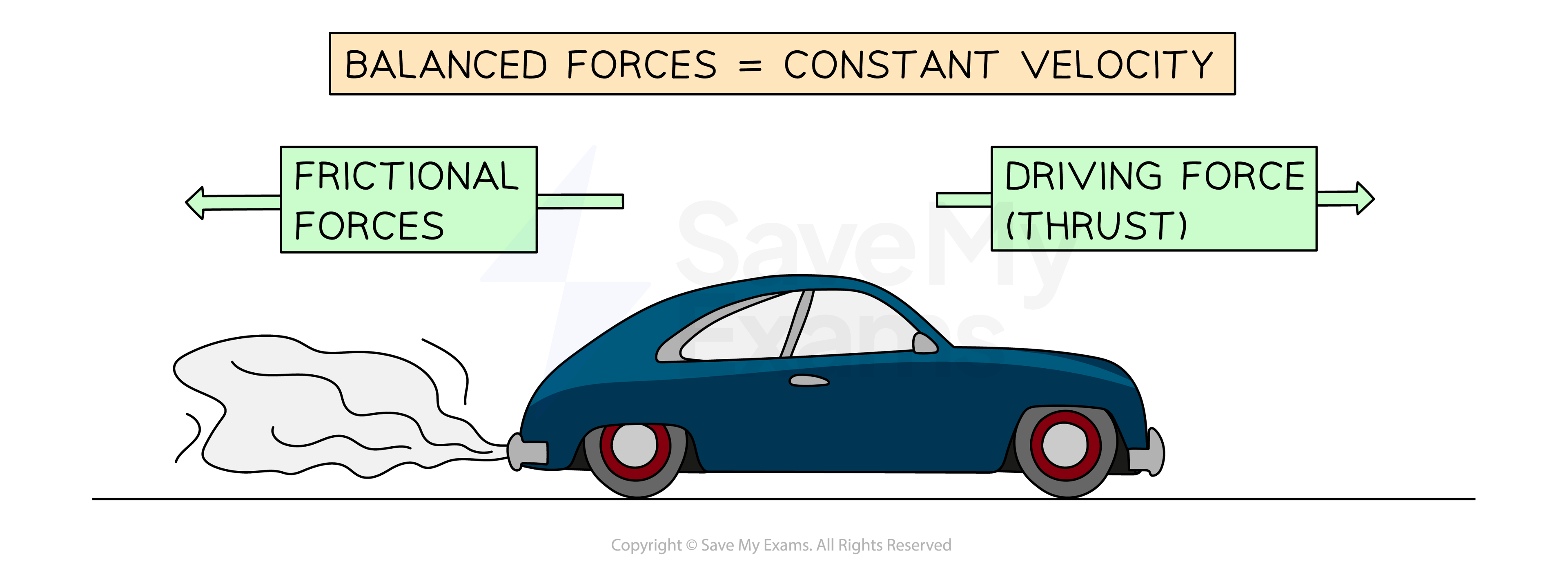Braking Force (Oxford AQA IGCSE Physics)
Revision Note

Author
Leander OatesExpertise
Physics
Braking Force
When a vehicle travels at a steady speed in a straight line (constant velocity), the resistive forces and the driving forces are balanced
There is no resultant force acting on the vehicle
So there is no change to the object's motion
The vehicle continues to travel at a constant velocity in accordance with Newton's first law of motion
Balanced forces acting on a car

When a driver applies the brakes, there is a frictional force between the brakes and the wheels of the car, also known as the braking force
This frictional force does work on the brakes - i.e. it transfers energy from the car to the brakes
Therefore, the kinetic energy of the car decreases and the thermal energy of the brakes increases - i.e. the brakes heat up
This means the car decelerates (slows down)
Work done when the braking force is applied

The greater the speed of a vehicle, the greater the braking force required to bring the vehicle to a halt for a given distance
This is due to the link between resultant force and acceleration as stated in Newton's second law of motion
Since the braking force would need to be larger, the deceleration of the vehicle will be large as well
Large decelerations could lead to the brake pads overheating and cause the brake discs to warp
Exam Tip
If you are asked to explain why the temperature of the brakes increases when a vehicle stops, remember, work is done by the frictional force between the brakes and the wheel. It's a common mistake to write about the friction between the wheels and the road. This does happen, but in this case, the wheels heat up the road. The brake temperature increases because there is a transfer of energy from the car's kinetic energy to the thermal energy of the brakes.

You've read 0 of your 0 free revision notes
Get unlimited access
to absolutely everything:
- Downloadable PDFs
- Unlimited Revision Notes
- Topic Questions
- Past Papers
- Model Answers
- Videos (Maths and Science)
Did this page help you?